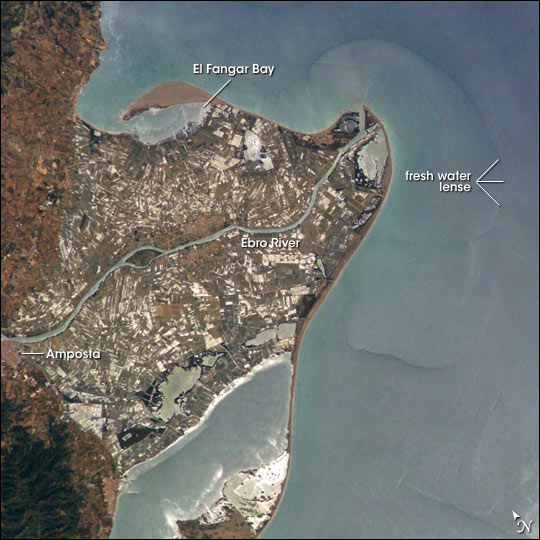|
Mulichinco Formation
The Mulichinco Formation is a geological formation in Argentina. It is Valanginian in age and is predominantly terrestrial, being deposited at a time of marine regression in the Neuquén Basin, and predominantly consists of siliciclastic rocks. Fossil content Dinosaur remains have been found in the formation, including those of the dicraeosaurid '' Pilmatueia''Coria et al., 2018 and carcharodontosaurid '' Lajasvenator''. Flora recovered from the formation includes the tree fern '' Tempskya dernbachii'' and horsetail ''Equisetites Equisetaceae, sometimes called the horsetail family, is the only extant family of the order Equisetales, with one surviving genus, ''Equisetum'', which comprises about twenty species. Evolution and systematics Equisetaceae is the only survivin ....'' References Bibliography * * * * {{issn, 0305-8719 Geologic formations of Argentina Lower Cretaceous Series of South America Cretaceous Argentina Valanginian Stage Mudstone formations ... [...More Info...] [...Related Items...] OR: [Wikipedia] [Google] [Baidu] |
Valanginian
In the geologic timescale, the Valanginian is an age or stage of the Early or Lower Cretaceous. It spans between 139.8 ± 3.0 Ma and 132.9 ± 2.0 Ma (million years ago). The Valanginian Stage succeeds the Berriasian Stage of the Lower Cretaceous and precedes the Hauterivian Stage of the Lower Cretaceous. Stratigraphic definitions The Valanginian was first described and named by Édouard Desor in 1853. It is named after Valangin, a small town north of Neuchâtel in the Jura Mountains of Switzerland. The base of the Valanginian is at the first appearance of calpionellid species '' Calpionellites darderi'' in the stratigraphic column. A global reference section (a GSSP) had in 2009 not yet been appointed. The top of the Valanginian (the base of the Hauterivian) is at the first appearance of the ammonite genus '' Acanthodiscus''. Subdivision The Valanginian is often subdivided in Lower and Upper substages. The Upper substage begins at the first appearance of ammonite speci ... [...More Info...] [...Related Items...] OR: [Wikipedia] [Google] [Baidu] |
Carcharodontosaurid
Carcharodontosauridae (carcharodontosaurids; from the Greek καρχαροδοντόσαυρος, ''carcharodontósauros'': "shark-toothed lizards") is a group of carnivorous theropod dinosaurs. In 1931, Ernst Stromer named Carcharodontosauridae as a family, which, in modern paleontology, indicates a clade within Carnosauria. Carcharodontosaurids include some of the largest land predators ever known: ''Giganotosaurus'', '' Mapusaurus'', '' Carcharodontosaurus'', and '' Tyrannotitan'' all rivaled or exceeded ''Tyrannosaurus'' in size. A 2015 paper by Christophe Hendrickx and colleagues gives a maximum length estimate of for the largest carcharodontosaurids, while the smallest carcharodontosaurids were estimated to have been at least long. Evolution Along with the spinosaurids, carcharodontosaurids were the largest predators in the early and middle Cretaceous throughout Gondwana, with species also present in North America (''Acrocanthosaurus''), Europe ('' Concavenator'') an ... [...More Info...] [...Related Items...] OR: [Wikipedia] [Google] [Baidu] |
Deltaic Deposits
A river delta is a landform shaped like a triangle, created by deposition of sediment that is carried by a river and enters slower-moving or stagnant water. This occurs where a river enters an ocean, sea, estuary, lake, reservoir, or (more rarely) another river that cannot carry away the supplied sediment. It is so named because its triangle shape resembles the Greek letter Delta. The size and shape of a delta is controlled by the balance between watershed processes that supply sediment, and receiving basin processes that redistribute, sequester, and export that sediment. The size, geometry, and location of the receiving basin also plays an important role in delta evolution. River deltas are important in human civilization, as they are major agricultural production centers and population centers. They can provide coastline defense and can impact drinking water supply. They are also ecologically important, with different species' assemblages depending on their landscape position ... [...More Info...] [...Related Items...] OR: [Wikipedia] [Google] [Baidu] |
Sandstone Formations
Sandstone is a clastic sedimentary rock composed mainly of sand-sized (0.0625 to 2 mm) silicate grains. Sandstones comprise about 20–25% of all sedimentary rocks. Most sandstone is composed of quartz or feldspar (both silicates) because they are the most resistant minerals to weathering processes at the Earth's surface. Like uncemented sand, sandstone may be any color due to impurities within the minerals, but the most common colors are tan, brown, yellow, red, grey, pink, white, and black. Since sandstone beds often form highly visible cliffs and other topographic features, certain colors of sandstone have been strongly identified with certain regions. Rock formations that are primarily composed of sandstone usually allow the percolation of water and other fluids and are porous enough to store large quantities, making them valuable aquifers and petroleum reservoirs. Quartz-bearing sandstone can be changed into quartzite through metamorphism, usually related to tec ... [...More Info...] [...Related Items...] OR: [Wikipedia] [Google] [Baidu] |
Siltstone Formations
Siltstone, also known as aleurolite, is a clastic sedimentary rock that is composed mostly of silt. It is a form of mudrock with a low clay mineral content, which can be distinguished from shale by its lack of fissility.Blatt ''et al.'' 1980, pp.381-382 Although its permeability and porosity is relatively low, siltstone is sometimes a tight gas reservoir rock, an unconventional reservoir for natural gas that requires hydraulic fracturing for economic gas production. Siltstone was prized in ancient Egypt for manufacturing statuary and cosmetic palettes. The siltstone quarried at Wadi Hammamat was a hard, fine-grained siltstone that resisted flaking and was almost ideal for such uses. Description There is not complete agreement on the definition of siltstone. One definition is that siltstone is mudrock (clastic sedimentary rock containing at least 50% clay and silt) in which at least 2/3 of the clay and silt fraction is composed of silt-sized particles. Silt is defined as g ... [...More Info...] [...Related Items...] OR: [Wikipedia] [Google] [Baidu] |
Mudstone Formations
Mudstone, a type of mudrock, is a fine-grained sedimentary rock whose original constituents were clays or muds. Mudstone is distinguished from ''shale'' by its lack of fissility (parallel layering).Blatt, H., and R.J. Tracy, 1996, ''Petrology.'' New York, New York, W. H. Freeman, 2nd ed, 529 pp. The term ''mudstone'' is also used to describe carbonate rocks (limestone or dolomite) that are composed predominantly of carbonate mud. However, in most contexts, the term refers to siliciclastic mudstone, composed mostly of silicate minerals. The NASA Curiosity rover has found deposits of mudstone on Mars that contain organic substances such as propane, benzene and toluene. Definition There is not a single definition of mudstone that has gained general acceptance,Boggs 2006, p.143 though there is wide agreement that mudstones are fine-grained sedimentary rocks, composed mostly of silicate grains with a grain size less than . Individual grains this size are too small to be distinguis ... [...More Info...] [...Related Items...] OR: [Wikipedia] [Google] [Baidu] |
Valanginian Stage
In the geologic timescale, the Valanginian is an age or stage of the Early or Lower Cretaceous. It spans between 139.8 ± 3.0 Ma and 132.9 ± 2.0 Ma (million years ago). The Valanginian Stage succeeds the Berriasian Stage of the Lower Cretaceous and precedes the Hauterivian Stage of the Lower Cretaceous. Stratigraphic definitions The Valanginian was first described and named by Édouard Desor in 1853. It is named after Valangin, a small town north of Neuchâtel in the Jura Mountains of Switzerland. The base of the Valanginian is at the first appearance of calpionellid species '' Calpionellites darderi'' in the stratigraphic column. A global reference section (a GSSP) had in 2009 not yet been appointed. The top of the Valanginian (the base of the Hauterivian) is at the first appearance of the ammonite genus '' Acanthodiscus''. Subdivision The Valanginian is often subdivided in Lower and Upper substages. The Upper substage begins at the first appearance of ammonite specie ... [...More Info...] [...Related Items...] OR: [Wikipedia] [Google] [Baidu] |
Cretaceous Argentina
The Cretaceous ( ) is a geological period that lasted from about 145 to 66 million years ago (Mya). It is the third and final period of the Mesozoic Era, as well as the longest. At around 79 million years, it is the longest geological period of the entire Phanerozoic. The name is derived from the Latin ''creta'', "chalk", which is abundant in the latter half of the period. It is usually abbreviated K, for its German translation ''Kreide''. The Cretaceous was a period with a relatively warm climate, resulting in high eustatic sea levels that created numerous shallow inland seas. These oceans and seas were populated with now- extinct marine reptiles, ammonites, and rudists, while dinosaurs continued to dominate on land. The world was ice free, and forests extended to the poles. During this time, new groups of mammals and birds appeared. During the Early Cretaceous, flowering plants appeared and began to rapidly diversify, becoming the dominant group of plants across the Earth by ... [...More Info...] [...Related Items...] OR: [Wikipedia] [Google] [Baidu] |
Lower Cretaceous Series Of South America
{{Disambiguation ...
Lower may refer to: *Lower (surname) *Lower Township, New Jersey *Lower Receiver (firearms) *Lower Wick Gloucestershire, England See also *Nizhny Nizhny (russian: Ни́жний; masculine), Nizhnyaya (; feminine), or Nizhneye (russian: Ни́жнее; neuter), literally meaning "lower", is the name of several Russian localities. It may refer to: * Nizhny Novgorod, a Russian city colloquial ... [...More Info...] [...Related Items...] OR: [Wikipedia] [Google] [Baidu] |
Geologic Formations Of Argentina
Geology () is a branch of natural science concerned with Earth and other astronomical objects, the features or rocks of which it is composed, and the processes by which they change over time. Modern geology significantly overlaps all other Earth sciences, including hydrology, and so is treated as one major aspect of integrated Earth system science and planetary science. Geology describes the structure of the Earth on and beneath its surface, and the processes that have shaped that structure. It also provides tools to determine the relative and absolute ages of rocks found in a given location, and also to describe the histories of those rocks. By combining these tools, geologists are able to chronicle the geological history of the Earth as a whole, and also to demonstrate the age of the Earth. Geology provides the primary evidence for plate tectonics, the evolutionary history of life, and the Earth's past climates. Geologists broadly study the properties and processes of Earth ... [...More Info...] [...Related Items...] OR: [Wikipedia] [Google] [Baidu] |
Geological Society, London, Special Publications
The Geological Society of London, known commonly as the Geological Society, is a learned society based in the United Kingdom. It is the oldest national geological society in the world and the largest in Europe with more than 12,000 Fellows. Fellows are entitled to the postnominal FGS (Fellow of the Geological Society), over 2,000 of whom are Chartered Geologists (CGeol). The Society is a Registered Charity, No. 210161. It is also a member of the Science Council, and is licensed to award Chartered Scientist to qualifying members. The mission of the society is: "Making geologists acquainted with each other, stimulating their zeal, inducing them to adopt one nomenclature, facilitating the communication of new facts and ascertaining what is known in their science and what remains to be discovered". History The Society was founded on 13 November 1807 at the Freemasons' Tavern, Great Queen Street, in the Covent Garden district of London. It was partly the outcome of a previous clu ... [...More Info...] [...Related Items...] OR: [Wikipedia] [Google] [Baidu] |
Cretaceous Research
''Cretaceous Research'' is a bimonthly peer-reviewed scientific journal published by Elsevier. The journal focuses on topics dealing with the Cretaceous period and the Cretaceous–Paleogene boundary. Abstracting and indexing The journal is abstracted and indexed in Scopus and the Web of Science. According to the ''Journal Citation Reports'', the journal has a 2020 impact factor The impact factor (IF) or journal impact factor (JIF) of an academic journal is a scientometric index calculated by Clarivate that reflects the yearly mean number of citations of articles published in the last two years in a given journal, as ... of 2.176. References External links * Elsevier academic journals Paleontology journals Publications established in 1980 English-language journals Bimonthly journals {{Cretaceous-stub ... [...More Info...] [...Related Items...] OR: [Wikipedia] [Google] [Baidu] |

Saunders_Quarry-1.jpg)


